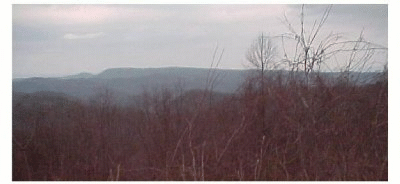H I S T O R Y
According to local legend, the lights were first reported by Cherokee and Catawba Indians, dating back to the year 1200. See LEGENDS for their version of the lights� origin.

In 1771, Geraud de Brahm, a German Engineer, was the first white man to explore the Linville territory. He was intrigued by unexplainable sounds in the area, and in his diaries, he wonders if such noises could be created by the spontaneous ignition of �nitrous vapors� carried by the wind. Some historians believe his speculation had some relevance to the lights.
In the twentieth century, the lights were first journalistically documented in 1913. A reporter from the Charlotte Observer explored the mystery. Afterward, they were investigated three times by the United States government: once by the U.S. Weather Service, and twice by the U.S. Geological Survey. Even the Smithsonian conducted an expedition. In a 1922 geological survey, George Mansfield studied the mountain and its weather conditions for weeks. In his official report, titled Circular 646, he stated the lights were: 47% auto headlights, 33% locomotive lights, 10% stationary lights, and 10% brush fires. Almost everyone clearly saw the report as pure hogwash. The lights had been seen long before autos and locomotives. Plus, in 1916, a great flood wiped out transportation routes. There were no trains or autos in the area for more than a week. However, the lights continued to be seen.
Numerous private groups have researched the lights throughout the years. One of the most prominent investigations was done in the mid-1970s to mid-1980s by a team of scientists from the Oak Ridge National Laboratory in Oak Ridge, Tennessee called ORION (Oak Ridge Isochronous Observation Network). They, along with a group called The Enigma Project, spent years analyzing the area. Though they gathered a great deal of valuable information, they were unable to conclusively solve the mystery.
Artists have been fascinated by the mountain. The lights inspired Andy Anderson�s novel, Kill One, Kill Two (in which the lights appear before a murder occurs), and have been featured in numerous books on the unexplained. North Carolina authors John Harden, Nancy Roberts, and John Parris have all included the phenomenon in their works. In the early 1960s, Scott Wiseman�s �Brown Mountain Light� became a hit bluegrass song, performed by Tommy Faile. It has been re-done by numerous artists. But, perhaps most significantly, the Brown Mountain Lights were featured in a May 9,1999 episode of The X-Files. The show was called �Field Trip.�
Currently, The Brown Mountain Lights are being investigated by L.E.M.U.R., a paranormal research team in Asheville, North Carolina. For more info. on the group, please clickHERE .
All content copyright � 2000 by Shadowbox Enterprises, LLC
|